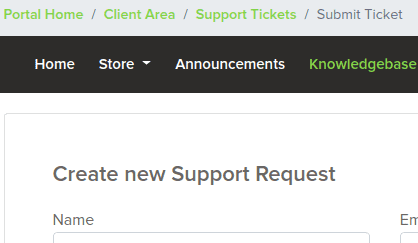“What is one core aspect of the web-hosting technical support experience you would change?” A very good question. These are my thoughts on the topic.
Table of Contents (TOC):
0. Introduction
When answering this question, I’ll talk with good, high quality technical support in mind. What do I mean by that?
People who are competent, patient, professional, and polite (with a sense of humor and irony, in order to preserve their own sanity), working with a company that is well organized – so they aren’t overworked, or underpaid (or both).
Digression 1:
I already wrote at great length on this topic in the article:
Hosting provider technical support – my thoughts and experience
Yes, I’m very creative with article titles.
When one is dealing with good quality, well organized technical support, there still are three big problems. Let’s have a closer look at them:
1. Problem one – numbers
I went to great lengths to create a good knowledge base – both with my “day-job company,” and for my cycling-related website. In spite of that, many people ask the same questions over and over again. Sometimes using a comment section of an article where that very question is answered just one paragraph above.
This can make the people answering the questions a bit “worn” to put it that way. If they answer each such question “manually,” it inevitably affects the quality of their work – or requires hiring a lot more people.
Solution?
Smart people solve this by pre-creating the answers to the frequently asked (simple) questions. The problem with that is that those answers are recognized as automated, and can miss the mark on some occasions. Here’s an “extreme” example where the answer is copy/pasted by a robot, but similar thing often happens when humans do the copy/pasting (in my experience at least):

No robots were harmed in the making of this screenshot!
Some egos get a bit hurt when receiving an automated response (see how I’ve abused the robot? 🙂 ), especially when it’s not a 100% matching one.
So it’s not perfect, but I think that’s as good as it gets. Don’t see another way of solving this problem. Not all the companies implement this though.
2. Catch 22 problem
I named this problem after the book by Joseph Heller – Catch 22 (Amazon affiliate link).
Digression 2:
The book’s plot takes place during the 2nd World War, talking about bomber-plane pilots sent on basically suicide missions, and the catch boils down to this:
Doc, I must be crazy to accept these suicide missions. Can I plead insanity and get released?
– Sure, but it won’t work.
There’s some catch?
– “Sure there’s a catch,” Doc Daneeka replied. “Catch-22. Anyone who wants to get out of combat duty isn’t really crazy.”
Problems I’m talking about remind me of this kind of a deadlock. What do I mean?
Modern tech runs using ever more complicated tech-stacks. Taking my basic WordPress website as an example:
- The website is running on WordPress.
- WordPress uses a server – that usually runs on Linux.
- Linux needs to serve all the files, run PHP, and MySQL database.
- I get to use a server by paying for the services of a hosting provider. The hosting provider company rents a server from another company, one that provides servers, like Hetzner, OVH or some third company – unless they run their own servers like MDDHosting (less common case).
- Hetzner (or other server-provider) uses another company to provide bandwidth (Internet connectivity) for their servers.
- For all I know, Hetzner (or OVH and the likes) could (should?) be hiring a third company for anti-DDoS protection (especially for game servers).
- Back to the hosting provider. They also use cPanel (and DirectAdmin) for customers’ user interface, CloudLinux for reducing the server load, Imunify360 for virus protection, MailChannels for outgoing spam prevention and email delivery, WHMCS for billing etc. All separate products, by separate companies.
- That’s just the basic stuff, necessary for running a website. Somewhere in 2018, I decided that using Cloudflare proxy is a good idea (providing a basic firewall, DDoS protection, and CDN).
Only now do we come to the WordPress itself:
- WordPress theme used to define the basic website visuals and functionality is created by GeneratePress, or another theme designer.
- The website also uses several WordPress plugins, which provide extra features, and each plugin is designed by a separate company.
Now, any single of the above-listed items could cause the website to stop working. And it’s normal for the customers to contact their hosting provider’s technical support in case of any problems.
However, even if the technical support people are super-knowledgeable, they can’t fix the problems with other company products they are using. Most they can do is contact those companies’ technical support people and depend on their service quality.
This can be a long, tedious process, but that’s not the worst thing. What happens when the other company says: “No, all’s good at our end” – and they aren’t lying? Let me explain:
Take any two of the above-listed companies (services) needed to run a website. Let’s call them “A” and “B.”
“A” notices some problems with the “B” service. But “B” confirms their service is working as intended. In that case, the problem is a particular way “A” and “B” are set up, causing the problem in one particular case.
However, “A” tech. support doesn’t know every detail about the “B” setup. The same goes vice-versa (this was the case with my BackWPup plugin problem). There’s no blaming either “A,” or “B” company’s technical support – how can they be expected to know the details of the other company’s setup? But the customer’s website isn’t working!
To solve this, it takes a person that is familiar with both “A” and “B” service setup details. Now multiply this with the number of services and companies in an average web-hosting stack. A term starting with the word “cluster” and ending with a synonym for love-making comes to mind. And, instead of getting upset about your website not working properly, you are likely to become amazed that it ever works at all!
How do we solve this?
Trust – sharing the information. Building good, “Googleable” knowledge bases. Writing down all the peculiar problems faced, and the solutions. Not many companies do this.
There is a caveat here – when it comes to security-sensitive data. For this to work flawlessly, every company in the stack needs to authorize at least one person from each other company to become acquainted with every detail. I don’t think this is reasonable to expect, hence there’s no perfect solution. But building good knowledge bases for stuff that can be shared would be a huge step forward.
This very IT-related website has over a hundred articles explaining the stuff I had to figure out to keep my cycling-related website running smoothly, while many (most?) “tech companies” have fewer articles in their knowledge base. At the cost of being a bit rude: that’s nonsense, in my opinion.
3. Customer expectations
Customers often have very high expectations. They often aren’t very tech-savvy, so can’t grasp the ideas discussed in the Catch 22 chapter of this article. To put it bluntly: “it’s your job to get my website back online!”

How do we explain the limits of the technical support scope? With people being so different, with different levels of knowledge, and different temperaments?
I believe in patience and education. Customer expectations can be managed (to a great degree) with good articles, (funny) videos, and even podcasts. Using different platforms, techniques, and approaches suitable for different people.
Also, and this is a tough call in the highly-competitive web-hosting world: promise less, and deliver more!
4. Conclusion
Missed the mark a bit here? The question was:
“What is one core aspect of the web-hosting technical support experience you would change?”
Well, the core of all the above-noted problems is the same: (the lack of) good knowledge-base, and informative content.
The stuff you create once, put it online, and it keeps working for you, even when you are sleeping.



I have a question.
Is there any hostmantis enterprise alternative with similar pricing and speed? I am looking for hostmantis alternative for long time but found none. Some provider pricing is too high, others quality, speed, uptime is not enough (ex,buyshared).
Or its better to go with vultr, upcloud using cyberpanel?
HostMantis offers, at least compared to the providers I’ve been with, very good performance for the price (“bang for the buck” as the Americans say).
They do offer what they call “Enterprise hosting” – practically a beefed up shared hosting, that lets you have a lot of resources, with zero worries about server management.
From my experience, their reseller hosting servers aren’t overloaded (I’ve used UK, Germany, and USA locations).
If those resources, and a more-less “standard” server configuration suffice, I’d give that a try.
If not, for any meaningful answer, I’d need to know what you require in terms of resources (and server configuration if something special is required).